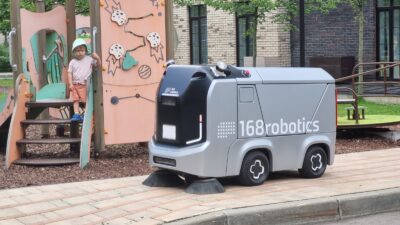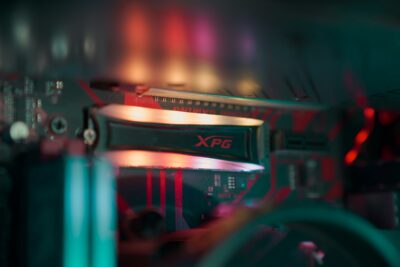Transforming Infrastructure with Edge Computing
Edge computing is playing a pivotal role in enabling the real-time smart infrastructure in the Gulf region, particularly in cities like Riyadh, Dubai, and Abu Dhabi. By decentralizing data processing and bringing it closer to the source, edge computing reduces latency and enables immediate response to events and conditions. This is critical for the smooth functioning of smart infrastructure, which relies on real-time data analysis and decision-making to optimize operations, improve efficiency, and enhance the quality of life for residents.
Real-Time Monitoring and Control
Edge computing enables real-time monitoring and control of various smart infrastructure components, such as traffic lights, streetlights, energy grids, water supply systems, and public transportation networks. Sensors embedded in these systems collect vast amounts of data on traffic patterns, energy consumption, water usage, and passenger flows. Edge computing devices located near these sensors can analyze this data in real-time, identifying anomalies, predicting potential issues, and triggering automated responses. For example, in a smart traffic management system, edge computing can analyze traffic data and adjust traffic signal timings dynamically to optimize traffic flow and reduce congestion.
Predictive Maintenance and Fault Detection
Edge computing also enables predictive maintenance and fault detection in smart infrastructure. By analyzing data from sensors and monitoring equipment performance, edge computing algorithms can identify patterns that indicate potential equipment failures or malfunctions. This allows for proactive maintenance, preventing costly downtime and ensuring the continuous operation of critical infrastructure. For instance, in a smart grid, edge computing can detect anomalies in power consumption patterns, indicating potential equipment failure or energy theft, enabling prompt action to prevent blackouts and ensure grid stability.
Edge Computing Applications in Smart Infrastructure
Smart Grids
Optimizing Energy Distribution and Consumption
Edge computing is revolutionizing smart grids in the Gulf region by enabling real-time monitoring and control of energy distribution and consumption. Edge devices deployed on power lines, substations, and smart meters can collect data on voltage levels, current flows, and energy consumption patterns. This data can be analyzed in real-time to identify areas of high demand, detect power outages, and optimize energy distribution. Edge computing can also facilitate demand response programs, where consumers are incentivized to reduce their energy consumption during peak hours, contributing to grid stability and reducing the need for additional power generation capacity.
Smart Buildings
Enhancing Energy Efficiency and Occupant Comfort
Edge computing is transforming buildings into intelligent, energy-efficient, and comfortable spaces. Sensors embedded in the building’s infrastructure collect data on temperature, humidity, occupancy levels, and lighting conditions. Edge computing devices analyze this data and use it to control HVAC systems, lighting, and other building systems in real-time. This ensures optimal comfort for occupants while minimizing energy consumption. For example, smart thermostats can learn the preferences of occupants and adjust temperature settings accordingly, while occupancy sensors can turn off lights and air conditioning in unoccupied rooms, saving energy and reducing costs.
Smart Transportation
Improving Traffic Flow and Public Safety
Edge computing is enhancing traffic management and public safety in smart cities across the Gulf. Traffic cameras equipped with edge computing capabilities can analyze video footage in real-time, detecting traffic violations, identifying accidents, and alerting emergency services. This can help to reduce traffic accidents, improve response times, and enhance road safety. Edge computing can also be used to optimize public transportation systems, providing real-time information on bus and train schedules, passenger flows, and delays. This enables passengers to plan their journeys more effectively and improves the overall efficiency of public transportation networks.
Future Outlook for Edge Computing in Smart Infrastructure
The Rise of Autonomous Systems
As edge computing continues to mature, we can expect to see a rise in autonomous systems that rely on real-time data processing and decision-making. In the transportation sector, self-driving cars and drones will become more prevalent, using edge computing to navigate, avoid obstacles, and communicate with other vehicles and infrastructure. In the energy sector, autonomous power grids will be able to balance supply and demand in real-time, optimizing energy usage and reducing carbon emissions. Edge computing will also enable the development of autonomous robots for various applications, such as inspection and maintenance of infrastructure, cleaning and sanitation, and delivery of goods and services.
The Convergence of AI and Edge Computing
The convergence of artificial intelligence (AI) and edge computing is another exciting development that will shape the future of smart infrastructure. Edge AI, which involves deploying AI algorithms on edge devices, can analyze vast amounts of data in real-time, identify patterns, and make intelligent decisions. This will enable the development of more sophisticated and adaptive smart infrastructure systems that can respond to changing conditions, anticipate future needs, and optimize performance. For example, edge AI can be used to predict traffic patterns and adjust traffic signal timings in real-time, optimize energy consumption based on occupancy patterns in smart buildings, and detect potential equipment failures in smart grids before they occur.
A More Resilient and Sustainable Future
By enabling real-time monitoring, control, and optimization of smart infrastructure, edge computing is contributing to a more resilient and sustainable future for cities in the Gulf region. The ability to detect and respond to potential issues in real-time can prevent major disruptions and ensure the continuity of critical services. Additionally, the optimization of energy consumption and resource utilization through edge computing can reduce carbon emissions and contribute to a more sustainable urban environment. As the Gulf region continues to invest in smart city initiatives, edge computing will play a pivotal role in achieving the vision of intelligent, efficient, and livable cities.
#edgecomputing #smartinfrastructure #realtimeoperations #Gulfregion #SaudiArabia #UAE #Dubai #Riyadh #technology #urbanddevelopment #smartgrids #smartbuildings #smarttransportation























